Clicking on most pictures will show a larger version
Researched by Barbara Anderson and Rosemary Bundy for the Malhamdale Local History Group December 2007, with assistance from :-
Barbara Gent – Brayshaw Library
Skipton Library
The Craven Museum
National Trust Office – Malham
The Palestine Exploration Fund
Balliol College, Oxford
Robin Bundy
Florence Carr
Sylvester Damus
David Hodgson
Phil Hudson
Dorothy Ingham
Margaret Thompson
David Tippey
Don Tuffs
Bibliography:
Portrait of a Merchant Prince: James Morrison, 1789-1857 - Richard Gatty, published 1977 by Pepper Arden, Northallerton
Walter Morrison: A Millionaire at Malham Tarn - WR Mitchell, published 1990 by Casleberg, Settle (ISBN 1-87-1064-09-0)
There Was a Green Hill: The History of Stillington from Its Beginnings Until 1950 - John Donald Tuffs, pub. 1999 by J.D. Tuffs
A short biography of Walter Morrison and information about Malham Tarn House.
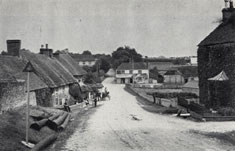
The George Inn, Middle Wallop, Hampshire
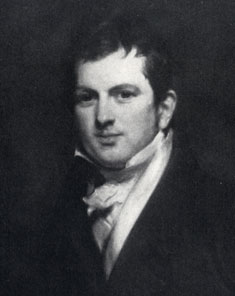
James Morrison (1789-1857)
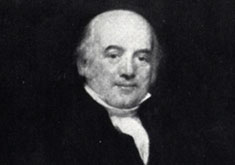
Joseph "Sunshine" Todd
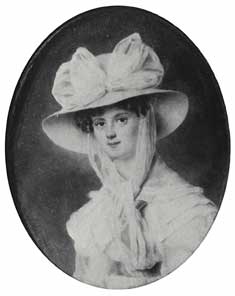
Mary Anne Todd (1795-1887)
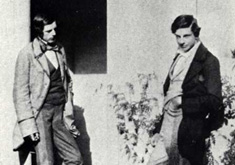
Walter (left) and George Morrison
Walter Morrison
"A man of many parts"
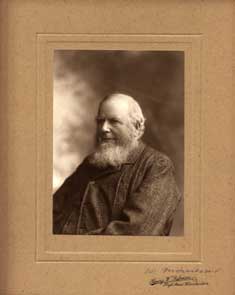
Walter Morrison MP (1836-1921)
Introduction
If you spend any length of time in Malhamdale, you will soon come across the name of Walter Morrison. He was involved in so many projects and aspects of local life, be it the school, the Church, the political scene, the estate etc, in fact you could say he had his finger in virtually every pie. It would therefore be impossible to cover all his life in a few pages, so we have tried to concentrate on some of the more important aspects and particularly the ones that touch more upon Malhamdale. We will look at his family and early life, his life as an MP, as a landowner, as a business man and finally as a benefactor.
When looking at his life it is helpful first to look a little into his family background to see what influences helped to shape him, his ideals and his principles. His father James was born in 1789 the second of four children of a publican father, living at the George Inn at Middle Wallop. Middle Wallop was on the coaching route between Salisbury and London so the business appears to have thrived with the increase of travel. All four children received an education but when James was a teenager, both parents died within a year of each other and the family was split up and the George Inn sold. What happened to James over the next few years is unsure but it is thought he may have been in Somerset with his mother’s family.
We do know that he was in London several years later working for a man called Joseph ‘Sunshine’ Todd in his haberdashery warehouse. He worked very hard and showed business acumen and one could say he had an eye on the main chance, because in a very few years he had taken over a share of the business and married the boss’s daughter, Mary Ann, although in fairness it did seem to be a love match as well as a good business arrangement. Not long afterwards he took complete control of the business.
He worked on the basis of low prices and quick turnover and was reputed to be the first person to sell goods at 1s 11d rather than 2s making the customer think he had got a bargain. He cornered the market in black crepe just before the death of Queen Charlotte in 1818 knowing the fashion then for wearing mourning black after the death of a monarch. He also made a fortune selling kid gloves, an item of dress essential at that time. He went to Italy and wrote home to say he had ‘…all the Neopolitan skins under my thumb’. He had in fact bought sufficient skins to make about half a million pairs of gloves. So we can see that Walter had an example of a shrewd business man to follow in later years.
His father went into public service and became a Radical MP for St Ives, then Ipswich and finally Inverness, and we see Walter in later life with the same strong sense of duty to his fellow men, a man with radical views and the desire to improve the lot of mankind.
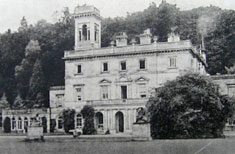
Fonthill House
James and Mary had 11 children between 1817 and 1842, Walter being the 9th child, the 5th son. By the time he was born in 1836, James was an extremely wealthy man. He bought Fonthill House in Wiltshire in 1830 and as a small child Walter would have spent his summers there and the winters in London. By 1838 James had also acquired Basildon Park, so his childhood was spent in very comfortable surroundings as part of this large family. His father was an art collector and said when he bought Basildon ‘Such a house and such a situation. What a casket to enclose pictorial gems.’ He formed a partnership with a dealer, William Buchanan, so he got first option on all his purchases and would often hang pictures at Basildon for several months before deciding if he really wanted to buy them. He mixed with artists, inventors and thinkers of the day so Walter grew up surrounded by beautiful things and interesting people. Unlike many Victorian fathers, James seems to have had a very open relationship with his children, and from an early stage they were able to be very honest and outspoken in their ideas and suggestions to him – he treated them very much as equals.
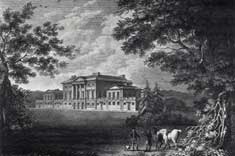
Basildon Park
Walter and his younger brothers were educated at Eton and then at Balliol College, Oxford. He left Oxford in 1858 with a first class degree and a reputation as an excellent oarsman, having rowed for Balliol as stroke. Already he was showing his love of physical activity. Throughout his life he kept close contact with Eton and Oxford and as we shall see later, he was extremely generous to both institutions especially Oxford.
As expected of his class, he completed his education with the Grand Tour, but Walter covered not only Europe, but Egypt, Syria and the USA. His travels in the East led to a life long interest in the history and archaeology of that area and he became Hon Treasurer of the Palestine Exploration Fund from the year following its formation in 1865, and was a member of the governing body right through until 1919, just before his death. He was actively involved in the planning of all expeditions by the PEF and was a generous benefactor all his life culminating in giving the Fund their current premises in central London, freehold in 1911, a priceless asset today.
Thus with his education complete he was ready to commence the next stage of his long career, already a wealthy well travelled young man with some quite radical views and with a strong sense of his position in society and of public duty, as befitted his upbringing.